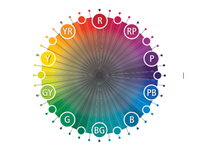Spider-silk is the soft, strong & elastic fiber nets, produced by spiders. But those are not spinable. As a result, despite having qualities, spider-made fibers can’t be used in textiles. But our scientists have found a genius way to implement the properties.
Background Story:
Spiders spin the silk at room temperature. It has some fabulous characteristics. For example, spider silk is up to 35% stretchable. This very lightweight fabric(only 1.3 gm/cm) can withstand high thermal conditions. Besides, it is also electrically conductive. To have enough applicable spider silk, researchers from the National University Of Singapore invented a chemically treated method.
Methods of Spider:
A highly concentrated protein solution, referred to as a silk dope, is transformed into a fiber strand in order to make spider silk.
External stimuli are applied, thus the protein arrangement in the dope changes. It helps to separate the liquid portion from the silk dope and leaves behind the solid portion, which is the spider silk fibers. A team of researchers led by Assistant Professor Tan Swee Ching from the Department of Materials Science and Engineering recreated the whole process. They have generated a new spinning technique, called the phase separation-enabled ambient (PSEA) spinning approach.
Regenerated method:
Here we try to briefly discuss the regenerated process for our readers.
- A viscous gel solution, consisting of polyacrylonitrile (PAN) and silver ions, also known as PANSion, mixed in the common solvent dimethylformamide (DMF). It was used to spin the soft fibers. This gel solution is called the spinning dope. When the gel is drawn and spun in the presence of air, it turns into a soft fiber strand.
- Water molecules in the air serve as a trigger when the PANSion gel is pulled and exposed to air. It causes the liquid component of the gel to separate from the solid portion of the gel as droplets. This phenomenon is called the Nonsolvent Vapor-induced Phase Separation Effect.
- After being separated from the solid fiber, the liquid portion’s droplets are extracted by holding the fiber upright or at an angle so that gravity may work.
Potential Applications:
Scientists demand that this PANSion silk can fulfill three basic needs of any textile fiber. They are high strength, stretchability & high conductivity. Besides these fibers are biodegradable. They can be used in meditech, sportstech, oekotech. Already different fashion events like Paris Fashion Week where a whole collection by Yuima Nakazato introduced the silk on their ramp.
Market Demand:
It has a huge growing demand in the market. According to Google, the market value of artificial spider silk was about $1.34 billion in 2022 and is expected to reach $7.45 billion by 2032. Who knows! Maybe by then, we would wear dresses made of spider silk .




